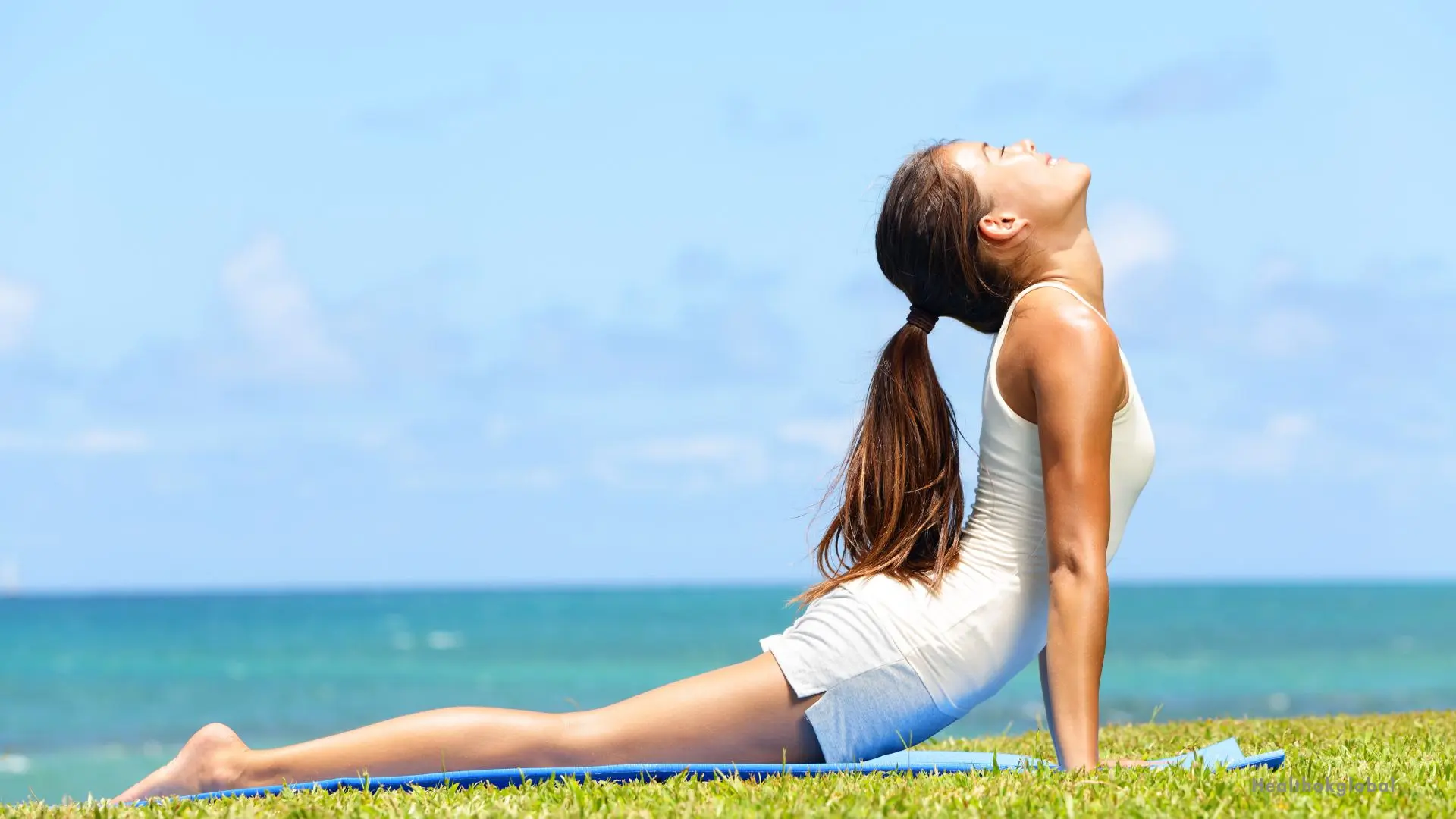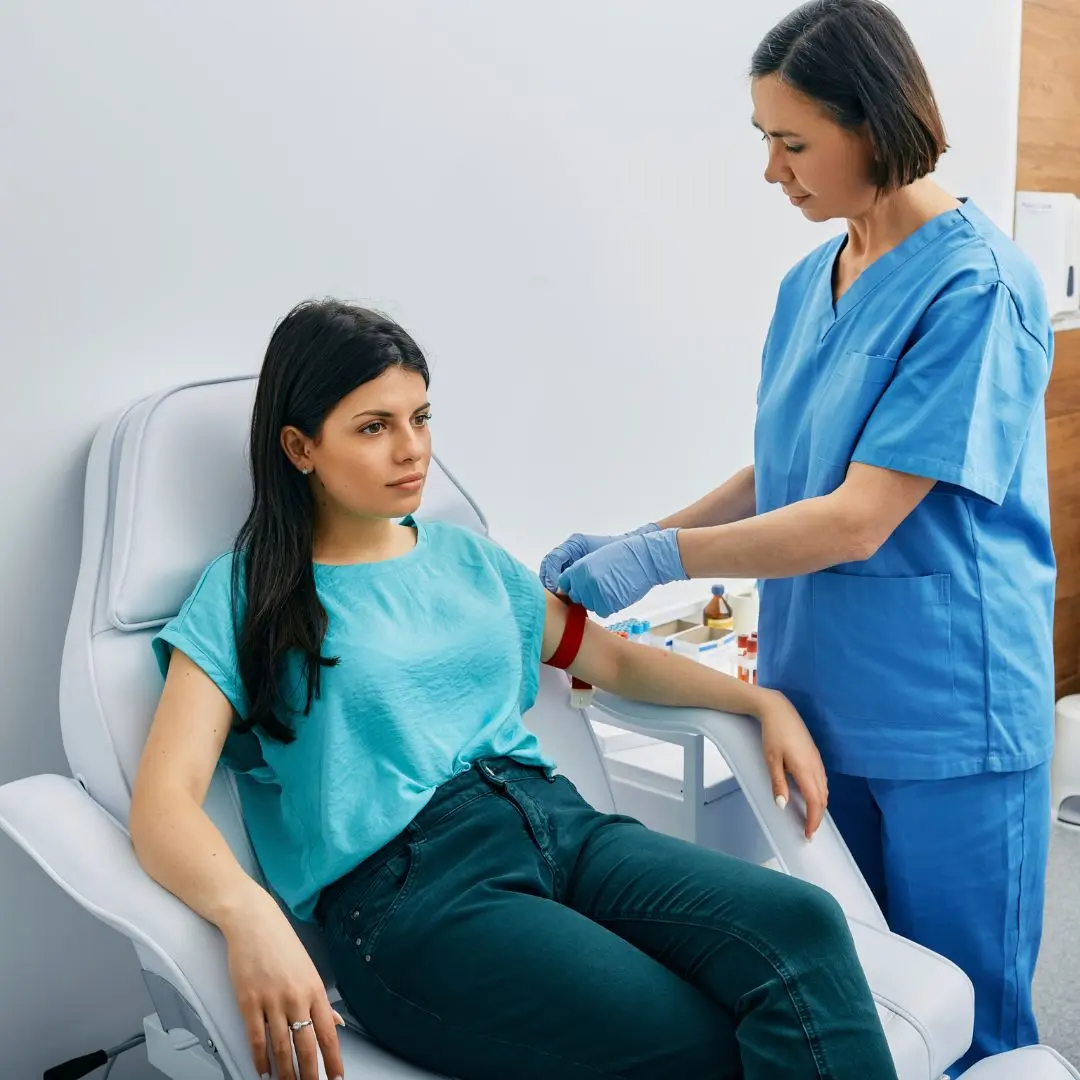Yoga is a holistic practice that promotes physical, mental, and spiritual well-being.

Blog
5 Yoga Asanas – Benefits & How to Do Them
Yoga is an ancient practice that integrates physical postures, breathing exercises, and meditation to promote overall health and well-being. Originating in India, yoga has been practiced for thousands of years and has evolved into various styles and forms. The word 'yoga' means union, symbolizing the integration of body, mind, and spirit. Regular practice of yoga can help improve flexibility, strength, balance, and mental clarity. This guide explores five essential yoga asanas, their benefits, and techniques to help you incorporate yoga into your daily routine.
Tadasana is a foundational pose that helps improve posture, strengthen the legs, and increase body awareness. It also promotes relaxation and mental clarity. This pose is excellent for those who spend long hours sitting, as it helps counteract the effects of poor posture and provides a sense of grounding. By aligning the body and engaging the muscles, Tadasana enhances overall body alignment and stability, making it a perfect starting point for any yoga practice.
Stand with your feet together and arms at your sides. Distribute your weight evenly across both feet. Engage your thigh muscles and lift your kneecaps. Lengthen your spine, lift your chest, and relax your shoulders. Breathe deeply and hold the pose for 30 seconds to 1 minute. Focus on feeling the connection between your feet and the ground, and visualize energy rising through your body. This pose can also be done with slight variations, such as raising the arms overhead to further engage the upper body and enhance the stretch.
Adho Mukha Svanasana stretches the hamstrings, calves, and spine. It helps relieve back pain, improve circulation, and calm the mind. This pose is often used as a transitional posture in yoga sequences and serves as a rest pose during practice. It strengthens the arms, shoulders, and legs, making it a comprehensive full-body stretch. Additionally, it helps alleviate tension in the shoulders and neck, which are common areas of stress accumulation.
Start on your hands and knees, with your wrists directly under your shoulders and knees under your hips. Spread your fingers wide and press firmly into the mat. Lift your hips toward the ceiling, straighten your legs, and press your heels toward the floor. Keep your head between your arms and gaze towards your feet. Hold the pose for 1 to 3 minutes. Focus on elongating the spine and evenly distributing the weight between your hands and feet. If your hamstrings are tight, you can slightly bend your knees to maintain a flat back and avoid straining.
Virabhadrasana I strengthens the legs, opens the hips and chest, and improves focus and balance. It also energizes the entire body, making it an empowering pose. This pose is named after the mythical warrior Virabhadra and symbolizes strength, courage, and determination. Practicing Warrior I can help build confidence and resilience, both physically and mentally. It also promotes lung capacity and breath control, which are essential for overall vitality.
Stand with your feet hip-width apart. Step your left foot back about 3-4 feet and turn your left foot slightly inward. Bend your right knee so that it is directly above your right ankle. Raise your arms overhead with your palms facing each other. Square your hips forward and press firmly into both feet. Hold the pose for 30 seconds to 1 minute, then switch sides. Engage your core and keep your spine lengthened. Ensure that your front knee does not extend beyond your toes to protect the knee joint. You can also adjust the distance between your feet to find a comfortable and stable stance.
Bhujangasana strengthens the spine, stretches the chest, shoulders, and abdomen. It helps alleviate stress and fatigue while promoting flexibility in the back. This pose is particularly beneficial for those with sedentary lifestyles or desk jobs, as it counteracts the effects of prolonged sitting and poor posture. It stimulates the digestive organs, improves circulation, and opens up the heart chakra, promoting emotional balance.
Lie face down on the mat with your legs extended and the tops of your feet pressing into the mat. Place your hands under your shoulders, elbows close to your body. Press into your hands and slowly lift your chest off the mat, keeping your elbows slightly bent. Engage your back muscles and lift your chest higher while keeping your hips on the mat. Hold the pose for 15 to 30 seconds, then lower down. Focus on using the muscles of your back rather than pushing with your hands. Keep your neck in a neutral position to avoid strain. You can modify the pose by keeping your elbows on the ground in Sphinx pose for a gentler backbend.
Savasana promotes deep relaxation, reduces stress, and helps lower blood pressure. It allows the body and mind to rest and rejuvenate. This pose is typically practiced at the end of a yoga session to integrate the benefits of the preceding poses. It helps release any residual tension and brings a sense of peace and calm. Practicing Savasana regularly can improve sleep quality, reduce anxiety, and enhance overall well-being.
Lie flat on your back with your legs extended and arms resting at your sides, palms facing up. Close your eyes and breathe naturally. Allow your body to completely relax, releasing any tension. Stay in the pose for 5 to 15 minutes. Focus on the breath and let go of any thoughts or distractions. You can use props like a bolster under your knees or an eye pillow for added comfort. Practice mindfulness and observe the sensations in your body without judgment.
Incorporating these five yoga asanas into your daily routine can provide numerous physical and mental health benefits. Regular practice helps improve flexibility, strength, and balance, while also promoting relaxation and mental clarity. Whether you are a beginner or an experienced practitioner, these poses offer a simple and effective way to enhance your well-being. Remember to practice with mindfulness and listen to your body, adjusting the poses as needed to suit your individual needs and abilities. Yoga is a journey of self-discovery and self-care. As you practice these asanas, pay attention to how your body feels and respond with kindness and compassion. Consistency is key, so try to practice regularly and make yoga a part of your lifestyle. Over time, you will experience the transformative effects of yoga on your physical health, mental clarity, and overall sense of well-being.
Tadasana is a foundational pose that helps improve posture, strengthen the legs, and increase body awareness. It also promotes relaxation and mental clarity. This pose is excellent for those who spend long hours sitting, as it helps counteract the effects of poor posture and provides a sense of grounding. By aligning the body and engaging the muscles, Tadasana enhances overall body alignment and stability, making it a perfect starting point for any yoga practice.
Adho Mukha Svanasana stretches the hamstrings, calves, and spine. It helps relieve back pain, improve circulation, and calm the mind. This pose is often used as a transitional posture in yoga sequences and serves as a rest pose during practice. It strengthens the arms, shoulders, and legs, making it a comprehensive full-body stretch. Additionally, it helps alleviate tension in the shoulders and neck, which are common areas of stress accumulation.
Incorporating these five yoga asanas into your daily routine can provide numerous physical and mental health benefits. Regular practice helps improve flexibility, strength, and balance, while also promoting relaxation and mental clarity. Whether you are a beginner or an experienced practitioner, these poses offer a simple and effective way to enhance your well-being. Remember to practice with mindfulness and listen to your body, adjusting the poses as needed to suit your individual needs and abilities. Yoga is a journey of self-discovery and self-care. As you practice these asanas, pay attention to how your body feels and respond with kindness and compassion. Consistency is key, so try to practice regularly and make yoga a part of your lifestyle. Over time, you will experience the transformative effects of yoga on your physical health, mental clarity, and overall sense of well-being.
Need Personalized Health Guidance?
Get expert advice tailored to your specific health needs from our qualified healthcare professionals.





